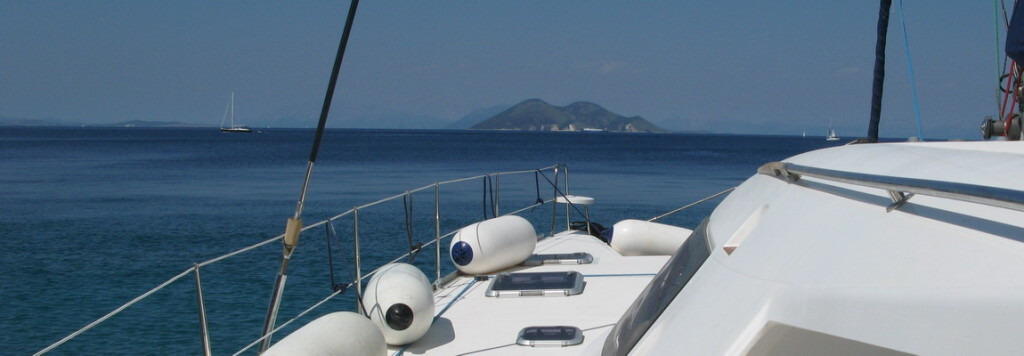If you plan to go sailing in Greece you are a lucky soul because Greece is the quintessence of sailing heaven.
The Greek mainland and island coastline that unfolded exceeds 16000 kilometers and the approximately 6000 Greek islands and islets form the unique marine geographical region where the sailing options seem inexhaustible. If we add to this how the general wind conditions affect differently in each region, then we find that regarding sailing in Greece there is a scale in the degree of ease or difficulty of sailing in each area, … something like the slopes of mountain skiing!
5 best clusters of islands for cruising in Greece
So let’s look at the best sailing areas sorted from the easiest to the most difficult:
- Saronic southerly of Athens,
- Ionian at the west of main Greece,
- Sporades at the NW Aegean Sea,
- Cyclades at middle south Aegean,
- Dodecanese at SE Aegean
The easiest cruising area is the Saronic Gulf because the sailing conditions are within the capabilities of novice sailors even when the winds get stronger. Most sailors agree that in the summer months the degree in the Ionian is very close to that of the Saronic as well as that rarely the Sporades differ from the Ionian. Regarding the Cyclades and the Dodecanese, opinions differ: some consider the Cyclades to be more difficult, while others consider the other way around. It depends more on the particular cruising area within each of these clusters: the farther from the island protection and the closer to the meltemi arc (#6 below) the cruising area is, the more difficult the sailing conditions are, if and when of course the meltemi is of strong intensity.
The above classification has to do only with the degree of ease / difficulty of cruising each area and not with its beauty. Because each of the above areas of the Greek islands has its own special character and when one has sailed all around, one will find it difficult to say which the most beautiful is.
From the secluded and off the grid coves to the party-famous islands, the diversity of sailing destinations is unparalleled.
To sail in Greece you do not need to have your own yacht there because in Greece many yachts are offered for rent at very good prices. If you have the necessary qualifications you can choose bareboat sailing. If, on the other hand, you need more sailing experience or you just want to get away, unwind and relax, then choose sailing in Greece with skipper who will take care of the yacht and the sailing on your behalf. You can even ask for a cook / hostess if you want more care for you on board. But keep in mind that yachts that have sails offer the most relaxing experience because they can without the use of a machine (and its noise) glide through the water and create a sonic melody as the bow whispers with the sea.
Whatever you choose, you will be free to make up your own itinerary although usually ready-made sailing itineraries are provided that you can follow if you want or even adapt them to your wishes. If you choose to go sailing with a skipper you do not need to deal with the following. But if you opt for a bareboat sailing in Greece it is good to bear the following things in mind:

7 things to know for your introduction to sailing in Greece
- The characteristic of the Greek coastline is its intensely indented geological formation in many bays and coves resulting in abundance in natural anchorages.
- There are not many marinas in Greece. On the other hand, there are many commercial ports on the islands and in the coastal towns as well as a plethora of small ports in fishing villages where there are usually places where the depths are sufficient for the approach of sailboats.
- If you choose to dock at a commercial port you may be bothered by the wake of the liners when they maneuver to anchor. In some ports these ships arrive even after midnight.
- Berthing alongside is not customary. The usual way of berthing is stern-to. This gives many advantages, the easy departure being one of them. If you want more privacy and less noise you can go bows-to.
- For the days when you will choose the serenity of a secluded cove, the best way to moor is to drop anchor (leaving of course enough chain depending on the depth) and tie the stern line around a rock or tree of shore. If you can tie off the stern with two lines to shore, so much the better.
- The prevailing winds in summer are northerly called meltemia (it is the plural of meltemi) which usually have a weekly periodicity. They appear in June and their intensity usually peaks from mid-July to mid-August, with the greatest intensity appearing on an arc in the central Aegean Sea targeting west. In areas with high mountains the intensity of the wind increases when it comes from their side. When the meltemi weakens, local winds of low to moderate intensity prevail and in a direction that is influenced by the topography of the area – mainly of a southern character.
- The distance between the popular sailing destinations is very short and there is usually visual contact of the next destination before departure or shortly after departure. Yes you got it right, it’s the ideal island hoping destination!
In conclusion, if you want to recharge and refresh by living an incomparable experience, go sailing in Greece.
Explore through the Official website of the Greek National Tourism Organisation
